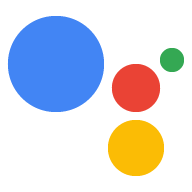O SDK do Google Assistente permite adicionar controle de voz, processamento de linguagem natural e a tecnologia do Google às suas ideias. Seu projeto captura uma fala (uma solicitação de áudio falada, como O que tem na minha agenda?), envia para o Google Assistente e recebe uma resposta falada, além do texto bruto.
Serviço do Google Assistente
O serviço do Google Assistente expõe uma API de baixo nível que permite manipular diretamente os bytes de áudio de uma solicitação e uma resposta do Assistente. As vinculações para essa API podem ser geradas para linguagens como Node.js, Go, C++ e Java para todas as plataformas compatíveis com gRPC.
O código de referência é fornecido em Python para captura de áudio, reprodução de áudio e gerenciamento do estado da conversa.
Compatibilidade e suporte a recursos
A tabela a seguir resume os requisitos de compatibilidade de plataforma do serviço do Google Assistente:
| Serviço do Google Assistente | ||
|---|---|---|
| Arquiteturas compatíveis | Todas as plataformas gRPC | |
| Idiomas compatíveis | Todos os idiomas gRPC | |
| Ativação por viva-voz (Ok Google) |
Não | |
| Captura e reprodução de áudio | O código de referência é fornecido | |
| Gerenciamento do estado da conversa | O código de referência é fornecido | |
| Cronômetros e alarmes | Não | |
| Reprodução de podcasts e notícias | Não | |
| Transmitir mensagens de voz | Não | |
| Saída visual (HTML5) das respostas do Google Assistente | Sim |
Etapas para começar a criar seus projetos
O SDK permite criar projetos rapidamente incorporando o Google Assistente e permitindo que você adicione funcionalidades exclusivas com o Actions on Google:
- Crie seu projeto usando as APIs gRPC.
- Confira ideias para as próximas etapas de personalização.
- Melhore seu projeto lendo as práticas recomendadas de privacidade e segurança e de configuração de áudio.

